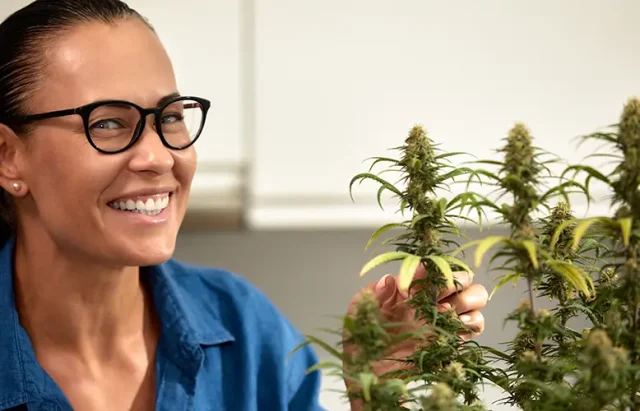
In the battle against weeds, mastering the germination process is a crucial step towards effective weed management. Weed seeds, like those of cultivated plants, require specific conditions to germinate and establish themselves in soil. By understanding the factors that influence weed seed germination and implementing strategic management practices, growers can gain the upper hand in controlling weed populations.
In this comprehensive guide, we explore the intricacies of the germination process for weed seeds and strategies for nurturing growth from seed to plant while minimizing weed infestations.
The Germination Process: A Primer
Germination is the process by which a seed transforms into a seedling capable of independent growth. For weed seeds, this journey begins when environmental conditions trigger the seed’s dormancy-breaking mechanisms, prompting it to absorb water and initiate metabolic activity. Key factors influencing weed seed germination include temperature, moisture, light exposure, soil composition, and seed dormancy characteristics.
Understanding Weed Seed Dormancy
Weed seeds exhibit various dormancy mechanisms that prevent premature germination and ensure their survival under unfavorable conditions. Common dormancy types include physical dormancy (seed coat impermeability), physiological dormancy (internal biochemical inhibitors), and morphological dormancy (embryo development stage). Breaking seed dormancy is a critical step in promoting weed seed germination and facilitating targeted weed control measures.
Factors Influencing Weed Seed Germination
Temperature:
Weed seeds have specific temperature requirements for germination, with each weed species exhibiting an optimal temperature range. Warm-season weeds typically germinate best in warmer temperatures, while cool-season weeds prefer cooler conditions. Understanding temperature preferences can help growers anticipate weed germination periods and implement control measures accordingly.
Moisture:
Adequate soil moisture is essential for weed seed germination, as water uptake triggers biochemical processes necessary for seedling emergence. However, excessive moisture can lead to seed rot and fungal diseases, compromising seed viability. Balancing soil moisture levels through proper irrigation and drainage practices is critical for promoting weed seed germination while minimizing water-related issues.
Light Exposure:
Light plays a role in regulating weed seed germination, with some weed species exhibiting photoblastic responses to light cues. Photoblastic seeds require specific light conditions (either exposure or darkness) to break dormancy and initiate germination. Understanding the light requirements of weed seeds can inform management decisions, such as tillage practices or mulching, to manipulate light exposure and promote or suppress germination.
Soil Composition:
Soil characteristics, including texture, pH, and nutrient levels, influence weed seed germination and seedling establishment. Weed seeds prefer well-aerated, nutrient-rich soils with neutral to slightly acidic pH levels for optimal germination. Soil amendments, such as compost or organic matter, can improve soil structure and fertility, creating favorable conditions for weed seed germination and growth.
Strategies for Optimizing Weed Seed Germination
Tillage and Seedbed Preparation:
Tillage practices, such as plowing or cultivation, can disturb the soil surface and expose weed seeds to favorable germination conditions. By creating a conducive seedbed environment and promoting seed-to-soil contact, growers can encourage weed seed germination and facilitate subsequent weed control measures, such as cultivation or herbicide application.
Pre-germination Treatments:
Mechanical or chemical treatments can be used to break seed dormancy and stimulate weed seed germination before planting or cultivation. Techniques such as scarification, stratification, or seed soaking can accelerate the germination process and enhance weed control effectiveness by synchronizing weed emergence with crop growth stages.
Seedbank Management:
Managing the weed seedbank, or the reservoir of viable weed seeds in the soil, is crucial for long-term weed control success. Practices such as crop rotation, cover cropping, and fallow management can disrupt weed seed dormancy cycles and reduce the overall weed seed population in the soil, leading to fewer weed infestations in subsequent growing seasons.
Cultural Practices:
Adopting cultural practices that promote crop competitiveness and suppress weed growth can complement weed seed germination management efforts. Strategies such as narrow row spacing, proper crop density, and timely weed control interventions can limit weed seed germination and establishment, reducing weed pressure and competition for resources.
Conclusion
Mastering the germination process for weed seeds is a foundational aspect of effective weed management strategies. By understanding the factors influencing weed seed germination and implementing targeted management practices, growers can promote weed seed dormancy breakage, facilitate seedling emergence, and minimize weed infestations in agricultural and horticultural settings.
Through a combination of pre-germination treatments, seedbank management techniques, and cultural practices, growers can nurture crop growth while effectively controlling weed populations, ensuring healthy and productive harvests for seasons to come.
Ready to start growing your own marijuana? Check out our comprehensive guide on how to germinate weed seeds and kickstart your marijuana cultivation journey today!





